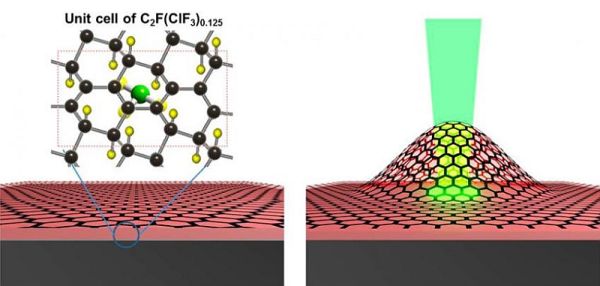Graphene is one of those rare gifts of nanotechnology that is still not unwrapped fully. Not long ago, we discovered that how sliding water over graphene generated electricity. Every time, researchers conduct an experiment, the lattice of carbon atoms pops up with different surprise. Lately, such revelation has brought to the fore by researchers at National University, Singapore. They have morphed a single layer of graphene along with certain amount of chlorine and fluorine atoms to create a two-stroke combustion engine. Similar mechanism although at a macro-scale is used for deriving power to chainsaws and motorcycles. It is noteworthy, that the micro version is equally powerful and is efficient enough to find a place in the future nanodevices.
Lee, one of the lead researcher suggested that there is no formation of any byproduct by the nano-engine and neither does it require any particular condition for functioning hence, it could be placed amongst the league of viable engine for nanodevices across applications including nanorobotics.
In two- stroke engine, generally the piston is doing the upward and downward motion for generating pressure but in the present case, the single layered lattice of the carbon atom is doing the same task. Upon hitting with a laser light, the spot swells itself and while the laser beam is removed, the blister reiterates to its flat position. As the laser beam is turned on and off rapidly, the spot could be observed forming a dome like shape or a blister and then getting flat again in the absence of laser light.
Inherent tensile strength of graphene has made it possible to behave like the piston in combustion engines. However, graphene alone would not be able to work as an engine so the researchers had to introduce certain amount of chlorine fluoride (ClF3) molecules into the carbon lattice. Consequent upon which the original atomic structure alters to a new version through which the molecules were then joined together via ionic carbon-fluorine bonds.
The bonding dissociates upon receiving laser light, which further gives rise to pressure between the graphene and its substrate. It was observed that the pressure generated was more than the average pressure of a car’s tire. And this pressure was leading to the formation of blister on the lattice. Once the light is removed, the ClF3 molecules chemisorb back forming the ionic bonds, thus flattening of the blister takes place.
Researchers also observed that the size of the blister was directly proportional to the power of the light. Higher the laser power, bigger would be the blister. In case, the power crosses the threshold of 8.5 mW, chances of bursting the blister would be equally high.
Research demonstrated the remarkable reliability of the graphene engine hence the researchers envision that by combining MEMS or NEMS techniques, the revolutionary engine could be integrated across various applications including nanorobots and other nanomachines.
Source: Phys.org




